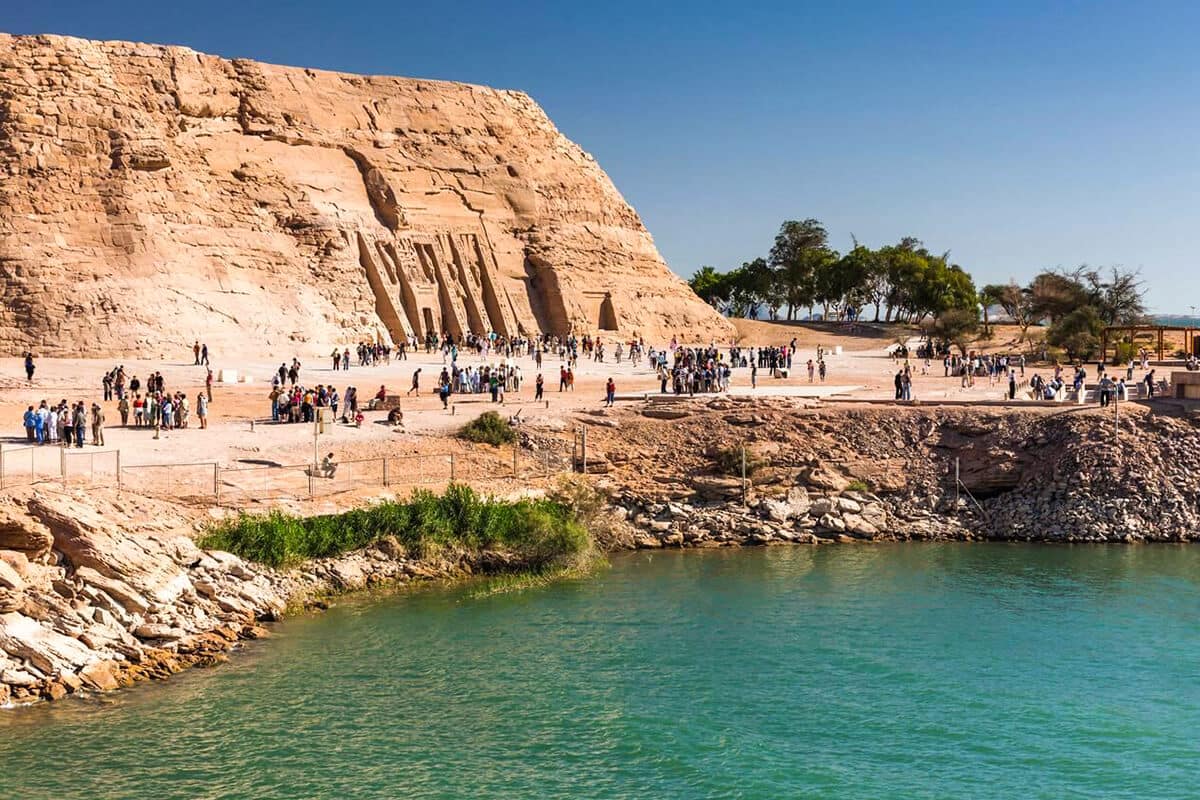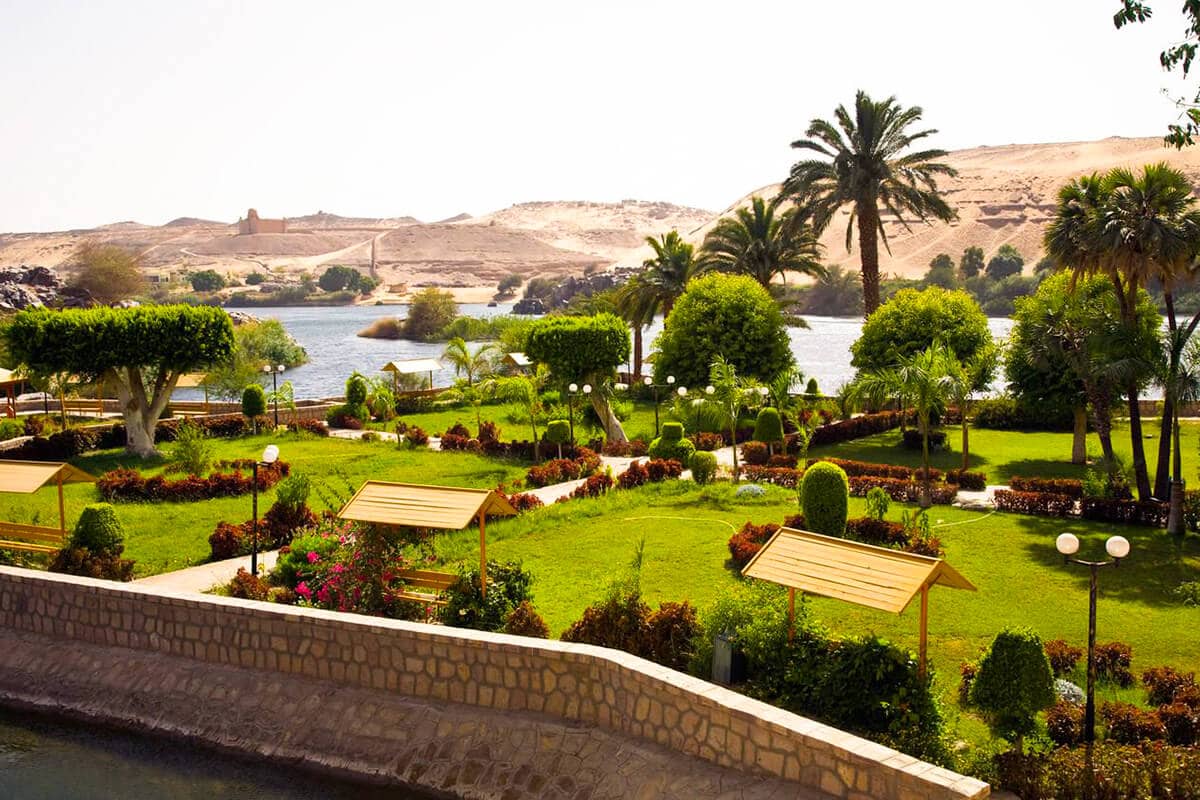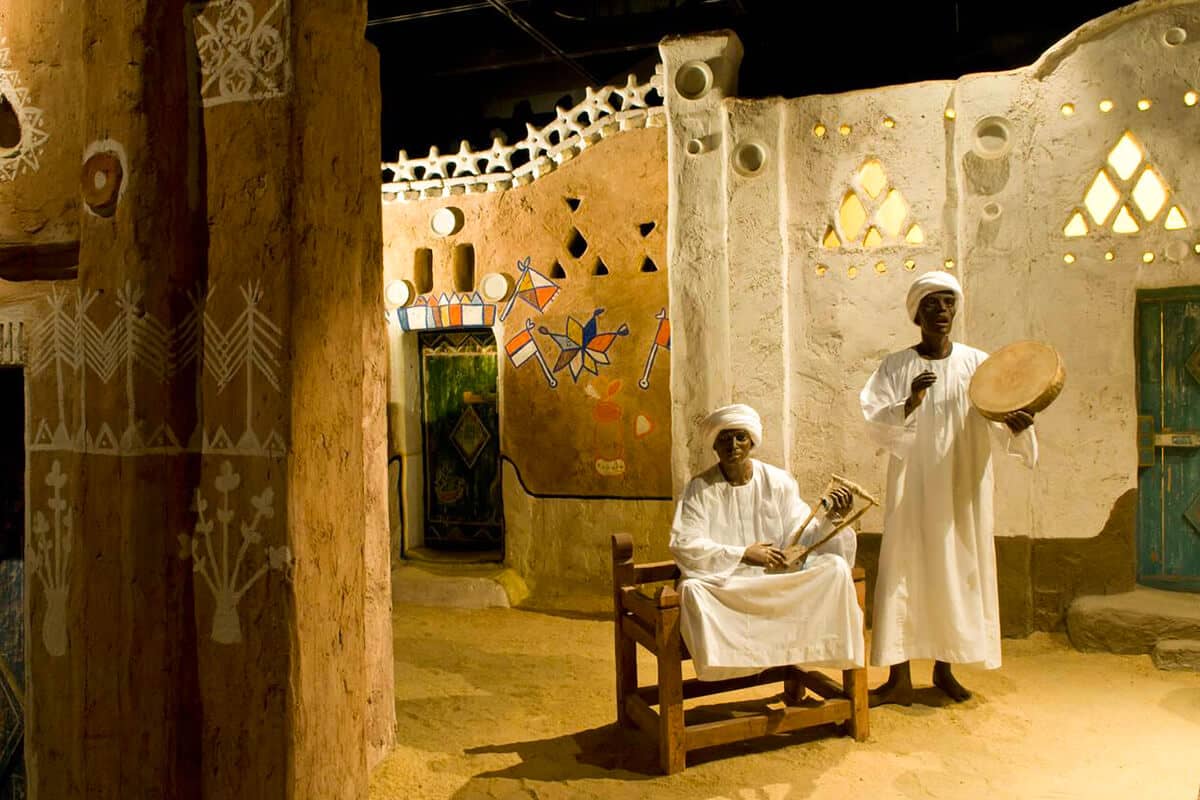The Nubian Villages in Egypt is a must-do experience for travelers exploring the country’s diverse culture and history. The Nubian people have a long and rich history steeped in tradition, and the Nubian Villages offer visitors a chance to immerse themselves in this fascinating culture. The villages’ unique architecture, vibrant colors, and stunning natural beauty create an unforgettable experience that will leave a lasting impression.
Nubia is located along the Nile River in southern Egypt and northern Sudan. It is home to a unique culture and way of life shaped by its ancient history and geographical location. The Nubian Villages, scattered throughout the region, offer a glimpse into this rich cultural heritage and allow visitors to experience the beauty and charm of Nubian life.
The History of Nubia

A. The Ancient Nubian Civilization
The Nubian civilization dates back to the 4th millennium BCE and is one of the oldest civilizations in Africa. The Nubian people were known for their advanced agriculture, architecture, and engineering knowledge. They built impressive pyramids, temples, and other structures, some of which still stand today. The Nubians had a complex social structure and were known for their craftsmanship, particularly in producing gold and pottery.
One of the most famous Nubian kingdoms was the Kingdom of Kush, which rose to power around 1000 BCE. The Kushites conquered and ruled over Egypt for several centuries and were known for their military prowess and architectural achievements, such as the construction of the Temple of Amun at Jebel Barkal.
B. The History of Nubia in Modern Times
In modern times, the Nubian people have faced many challenges, including displacement and forced relocation due to the construction of the Aswan High Dam in the 1960s. The dam flooded large portions of Nubia, forcing thousands of Nubians to abandon their homes and villages.
Today, the Nubian people face challenges in preserving their cultural heritage and way of life. However, there has been a growing interest in recent years in the Nubian culture, with many people visiting the Nubian Villages in Egypt to learn more about this unique and fascinating civilization.
C. The Culture and Traditions of the Nubian People
The Nubian culture is steeped in tradition and is characterized by its colorful dress, lively music, and flavorful cuisine. Nubians are known for their hospitality and are always eager to welcome visitors to their villages. The Nubian language is also unique, with its alphabet and grammatical structure.
One of Nubia’s most significant cultural events is the Nubian wedding ceremony, a multi-day celebration involving music, dance, and traditional dress. The bride and groom are dressed in bright, colorful clothing and adorned with intricate henna designs.
The Nubian people also have a solid connection to the natural world, with many traditional beliefs and practices centered around the Nile River and the surrounding landscape. For example, the Nubian House of Wisdom is a conventional learning center focusing on the natural sciences and the environment.
In summary, the Nubian culture has a rich and complex history that spans thousands of years. Despite facing challenges in modern times, the Nubian people have managed to preserve their unique way of life and continue to welcome visitors to their villages to share in their traditions and culture.
The Geography of Nubia

A. The Location of Nubia in Egypt
Nubia is located along the Nile River in southern Egypt and northern Sudan. It stretches from the Aswan High Dam in the north to Khartoum in the south. The Nubian Villages are located primarily in southern Egypt, near the border with Sudan.
B. The Geography of the Nile River in Nubia
The Nile River is the lifeblood of Nubia and has shaped the region’s geography and culture for thousands of years. In Nubia, the Nile flows through a narrow valley flanked by rocky cliffs and desert terrain. The river is dotted with islands and sandbanks and is home to various wildlife, including crocodiles, hippos, and numerous bird species.
One of Nubia’s most impressive natural features is cataracts, a series of rapids and waterfalls that make the Nile River challenging to navigate. Cataracts played a significant role in Nubia’s history, as they made it challenging for invaders to enter the region and allowed the Nubian people to maintain their independence for centuries.
C. The Natural Beauty of the Nubian Landscape
The Nubian landscape is characterized by its rugged terrain, towering cliffs, and striking natural beauty. The region is home to several nature reserves and parks, including the Wadi El Gemal National Park and the Abu Galum Nature Reserve, which allow visitors to explore the region’s diverse flora and fauna.
One of the most iconic features of the Nubian landscape is the traditional Nubian House, with its vibrant colors and intricate designs. The houses are typically built from mud bricks and are adorned with brightly painted patterns and symbols, making them a striking sight against the backdrop of the desert landscape.
The Nubian Villages in Egypt

A. The Different Nubian Villages to Visit
There are several Nubian Villages located in southern Egypt near the city of Aswan. Some of the most popular villages to visit include Gharb Soheil, Siou and Koti, and Daraw. Each town has its unique charm and offers visitors an opportunity to experience Nubian culture and hospitality.
B. The Unique Architecture of the Nubian Villages
The Nubian Villages are famous for their traditional architecture, characterized by brightly colored mud-brick houses adorned with intricate patterns and symbols. The houses are typically built around a central courtyard to keep the interior cool and comfortable in the hot desert climate. Visitors to the Nubian Villages will be able to explore the unique architecture and learn more about these structures’ history and cultural significance.
C. The Way of Life in Nubian Villages
The Nubian people are known for their friendly and welcoming nature, and visitors to the Nubian Villages will have an opportunity to experience this hospitality firsthand. The way of life in the Nubian Villages is closely tied to the Nile River, and many Nubians rely on fishing and farming for their livelihoods. Visitors can participate in traditional Nubian activities such as fishing, henna painting, and even attending a Nubian wedding celebration.
Things to Do and See in the Nubian Villages

A. Visit the Nubian House of Wisdom
The Nubian House of Wisdom is a cultural center in Abu Simbel’s village. The center is dedicated to preserving and promoting Nubian culture and features traditional crafts, music, and art exhibits. Visitors can also attend lectures and workshops on Nubian history and language topics.
B. Explore the Temple of Kalabsha
The Temple of Kalabsha is an ancient temple located on the banks of the Nile River. Built during the Roman period, the temple features well-preserved carvings and hieroglyphics and is dedicated to the Nubian god Mandulis. Visitors can explore the temple and learn about the history of Nubia and the Roman occupation of Egypt.
C. Take a Boat Ride on the Nile River
One of the best ways to experience the beauty of the Nubian landscape is to take a boat ride on the Nile River. Visitors can rent a felucca, a traditional sailing boat, and sail along the river, taking in the stunning views of the desert landscape and the ancient ruins that dot the shoreline.
D. Shop at the Local Markets for Unique Souvenirs
The Nubian Villages are known for their vibrant markets, where visitors can find a variety of unique souvenirs, such as handcrafted jewelry, textiles, and pottery. The needs are also a great place to sample traditional Nubian foods and drinks, such as hibiscus tea and ful medames, a dish made from fava beans.
How to Get to the Nubian Villages

A. Getting to Aswan
Aswan is the gateway to the Nubian Villages and can be reached by air, train, or bus from major cities in Egypt. Aswan International Airport is located about 16 km from the city center and is served by several domestic and international airlines. Trains and buses also operate regularly between Aswan and other cities in Egypt.
B. Taking a Tour to the Nubian Villages
One of the easiest ways to visit the Nubian Villages is to book a tour with a reputable tour operator. Many tours offer transportation to the villages and guided tours of the local sites and cultural centers. Some tours also include visits to nearby attractions such as the Temple of Philae or a visit to a Nubian family’s home.
C. Travel Tips for Visiting the Nubian Villages
When visiting the Nubian Villages, respecting the local customs and traditions is essential. Visitors should dress modestly and remove their shoes when entering homes or cultural centers. It’s also a good idea to bring cash, as many local vendors and markets may not accept credit cards. Finally, visitors should be aware of Nubia’s hot and dry climate and bring sunscreen, a hat, and plenty of water to stay hydrated.
Conclusion
The Nubian people are known for their warmth and hospitality, and visitors to the Nubian Villages will undoubtedly feel welcome and embraced by this vibrant community. From the traditional cuisine to the unique architecture, the Nubian culture is truly a treasure of Egypt.
If you plan a trip to Egypt, add the Nubian Villages to your itinerary. With so much history, culture, and natural beauty to explore, it’s an experience you will want to experience. Book a tour or go to Aswan and explore the Nubian Villages independently. Either way, you will indeed create memories that will last a lifetime.
If you want to cruise through Nile River check out Egypt Nile River cruises
Don’t miss to check out our All-inclusive egypt vacation packages you can spend one day in egypt, check out in Egypt day tours













